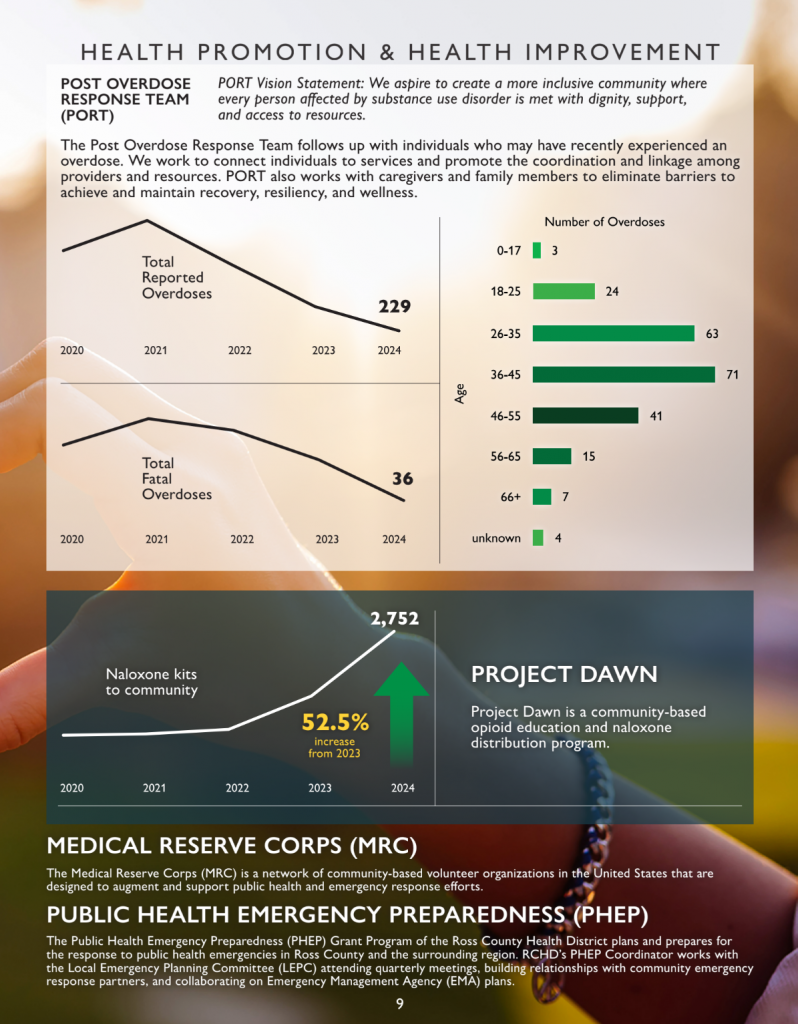
CHILLICOTHE, OH – The Ross County Health Department’s 2024 Annual Report paints a stark picture of the ongoing opioid crisis, revealing a significant number of reported overdoses. The report, which includes data from the Post Overdose Response Team (PORT), shows a concerning rise in total reported overdoses, reaching a staggering 229 in 2024. This figure underscores the urgent need for continued and intensified efforts to combat substance use disorder within the community.
The report also highlights a disturbing trend in fatal overdoses, with 36 lives lost in 2024. While the report doesn’t specify the cause, the high number strongly suggests the continued prevalence of potent synthetic opioids like fentanyl in the area. The report does say that a majority of those deaths were people aged 26-45 years of age. The report said that teens were less of a factor in overdoses than adults.
In response to the escalating crisis, the Ross County Health Department and its partners have significantly increased their efforts to provide life-saving resources. The distribution of naloxone kits, a critical tool in reversing opioid overdoses, saw a dramatic 52.5% increase from 2023. This surge in naloxone distribution reflects the community’s proactive approach to mitigating the devastating impact of overdoses.
The report also sheds light on the age demographics of those affected by overdoses. The largest number of overdoses occurred in the 36-45 age group, followed closely by the 26-35 age group. This data highlights the need for targeted interventions and support services for these specific age ranges.
The Ross County Health Department’s PORT program plays a crucial role in connecting individuals who have experienced an overdose with vital resources. The program aims to provide a lifeline to those struggling with substance use disorder, offering support, access to treatment, and promoting recovery. Additionally, the Medical Reserve Corps (MRC) and the Public Health Emergency Preparedness (PHEP) program are actively involved in bolstering community resilience and preparedness for public health emergencies, including the opioid crisis.
Project DAWN (Deaths Avoided With Naloxone), a community-based opioid education and naloxone distribution program, is another key initiative in the fight against overdoses. This program empowers individuals with the knowledge and tools to respond to overdoses, potentially saving lives.

The Ross County Health Department’s 2024 Annual Report serves as a call to action. While the numbers are alarming, they also highlight the community’s unwavering commitment to addressing the opioid crisis through collaborative efforts, increased resource allocation, and a focus on prevention, treatment, and recovery. The report emphasizes the importance of creating a more inclusive community where every person affected by substance use disorder is met with dignity, support, and access to resources.










